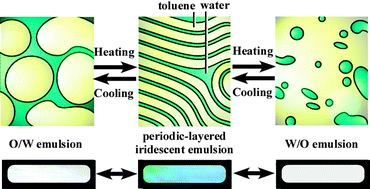Emulsions comprising a dual-surfactant system of a long-chain amidoamine derivative and a quaternary ammonium salt developed an iridescent color at a specific temperature region. The emulsions underwent phase inversion on heating from an O/W emulsion to a W/O emulsion, passing through a periodical lamellar structure which developed a characteristic interference color. Interestingly, the color and the coloring temperature can be independently controlled by adjusting the concentration of surfactants, respectively.

